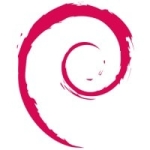What is our primary use case?
The main use case is general system administration, which includes configuring networking, configuring storage volumes, managing users, and running backup applications.
How has it helped my organization?
Application performance is one of its main benefits. The applications that run on RHEL are very stable.
I've not done much work with containers, but with general applications, as compared to other solutions that I've used, RHEL has the best portability. I have not had any issues or application failures while migrating. I've moved virtual machines and systems from one platform to another, and I've never been scared of RHEL. I never had to deal with application failures while moving them from one place to there. That's why I'm pretty confident with RHEL when it comes to working with it.
What is most valuable?
I like its integrations. I would put it higher than any other Linux version when it comes to availability. Its integrations with different applications and solutions are the best. We work with a lot of clients that use RHEL, and we could easily and quickly integrate any cloud solution, virtualization solution, storage solution, or software with the RHEL system. It is better than the other solutions we have worked with.
I like the way the updates are done and the way packages can be installed through the Red Hat Package Manager. I like it because of how fast and straightforward it is.
What needs improvement?
Its user interface could be better for people who want to use the GUI. They can provide a better user interface with more features. Storage works perfectly fine. Of course, continuous improvements should be made all the time, but it isn't at all lacking when it comes to storage and other features.
For how long have I used the solution?
I've been using RHEL for four years, but in the last 12 months, I've used it more.
What do I think about the stability of the solution?
It is the most stable one. It is very stable.
What do I think about the scalability of the solution?
It has the ability to scale. I know that it can scale, but because of my limited experience with scaling, I don't know how good scaling is. I have only done the basic scaling, but I would assume that it can scale way more than what I have done.
Most of my usage of it is on a private cloud. I've used it in a hybrid cloud environment, but I've not done a lot of work with the hybrid cloud because most of the clients we work with have private clouds. The little bit of experience I have had with the hybrid cloud was related to basic application installation and scaling. For the scaling part, I was able to have the applications first in the private cloud and then migrate or move it to a hybrid cloud. I was able to integrate them, and I was able to change the environment, as well as have them work in a cluster. The scaling part was seamless. It was pretty easy. It was easier than I thought.
The private cloud is deployed at three locations. The public cloud is deployed across two regions. There are a lot of users of this solution. There are different systems for different applications and different services. I can't put a number on the total number of users. Some systems have 50 and some systems have close to 70. There are systems with just 10 or 5 users.
How are customer service and support?
They can be faster. Because I work in support, I classify support in terms of how well you can resolve an issue and how fast you can resolve an issue. They don't reply fast enough. In a lot of instances, they don't get back to you immediately, and you have to wait for a while after creating a support ticket. They can be faster at that, but when it comes to resolving your issue, they are good. Overall, I would rate their support a seven out of ten.
How would you rate customer service and support?
Which solution did I use previously and why did I switch?
Prior to using RHEL, I was using Windows. I've also done a lot of work with Ubuntu, SUSE, and other Linux solutions, but Red Hat is the best one. I prefer it over other solutions because I'm used to it, and I find it better than other solutions. I'm used to the commands, and it is easy for me to navigate my way through it. If I have to choose between Windows and Linux, I would always go with Linux and choose RHEL because of its stability and agility.
I also use CentOS for my personal things or running some tests. For example, if I want to run a test with a client, it doesn't make sense to run a test in the client's production environment. I have a test environment with CentOS, and I run the test on CentOS before going to RHEL. I'm pretty comfortable using CentOS. CentOS is like my own testing environment.
The reason I switched over to RHEL was that over here, almost everybody or every client who uses Linux has RHEL. So, I had to understand how RHEL works. I realized that most people use it because of its stability. People find this system and its architecture good. A lot of clients talked about how they preferred the architecture of RHEL. Some clients find the commands to be easily readable, and some clients find it easy to integrate with others. A lot of clients find patching and package management pretty easy.
How was the initial setup?
In terms of the deployment model, we have a private cloud. We have VMware for virtualization and Azure Stack for the private cloud. There are also public clouds, such as GCP, AWS, and Azure, and then there is the physical hardware. Some of our deployments are on physical hardware. So, we deploy RHEL on physical servers, and then, there's also the hybrid model when some clients want to integrate the private cloud and the public cloud together. They want the public cloud to be like a backup environment, or they want the private cloud to be a backup environment.
I was mostly involved in the deployment of the hardware and the private cloud. I was also a part of the team that set up the hybrid environment, but I didn't do a lot of work on the public cloud side. The only complex part of the deployment was the hybrid configuration, where we were trying to interconnect the private cloud and the public cloud. The deployment on the public cloud was more straightforward than the deployment on the private cloud because, on a public cloud, the image is already there, whereas, on a private cloud, you have to set the image up yourself.
Each deployment model took approximately one week to deploy, but the hybrid model, requiring interconnecting the private and public clouds, took more than a week because there were a lot of dependencies.
In terms of maintenance, it does require maintenance. That's the main reason why people pay for support.
What was our ROI?
We have definitely seen an ROI. There are around 15% savings.
What's my experience with pricing, setup cost, and licensing?
It is pretty expensive, but it is worth it. Generally, in an enterprise environment, there is no cheap solution. This is coming from someone who is working with a company that provides a lot of solutions a bit cheaper than the industry standard. In the enterprise environment, I believe no solution is inexpensive, but RHEL is still pretty expensive.
Additional costs that I am aware of are usually for support and setup. A lot of banks use RHEL. I've seen the cost of the support and setup. Some of them complain about it, but they also talk about how well it works.
I have not compared the overall costs of open-source competitors to the overall costs of RHEL when it comes to supporting business operations over time. The only other distribution for which I have seen the pricing is AIX, which was a bit more expensive than RHEL.
What other advice do I have?
I would always advise doing a proof of concept where the client gives out his requirements and you run a proof of concept based on those requirements to make them confident of purchasing the solution. It is always better if a proof of concept is done. This way, everybody knows what they're getting into.
Its built-in security features are definitely helpful, but at the end of the day, you have to go further than using the built-in ones. You have to do a few other things yourself. The built-in features are helpful for compliance, but we, and most enterprise organizations, always want to go further than using built-in features because some built-in features could be more open to risks. We use the best built-in features, but we always want to go further and integrate other features into the RHEL system.
I have used Red Hat Insights only once, and I have not worked much with it, but my colleagues handling monitoring used it. It was helpful for the unpatched system. They checked Red Hat Insights and saw the systems that need patching. We got an email saying that it is a security requirement and that we need to patch them because it may affect the security of the systems. Coincidentally, after doing the patching, we read blogs about security hacks out there for some of the older systems that were not patched early enough.
Red Hat Insights provide us with vulnerability alerts, but I am not sure about targeted guidance. Vulnerability alerts have impacted the uptime, which is something that we take very seriously. Uptime was one of the major reasons we wanted to work with Insights because we didn't want any attacks that would cause downtime.
Overall, I would rate Red Hat Enterprise Linux an eight out of ten.
Disclosure: My company does not have a business relationship with this vendor other than being a customer.
















